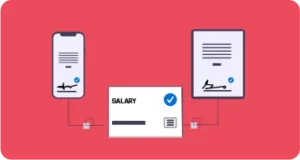Master M&A integration: 7 Steps for Integrating Inherited Talent
Mergers and acquisitions (M&A) often occur due to the need to bring together two or more entities in order to create a larger, more successful organization. In most cases, when two organizations merge, the combined organization acquires a wealth of new assets – among them, an inherited talent pool. Integrating inherited talent into the new organization is one of the key steps for any successful enterprise M&A operation.
Integrating inherited talent from a merger or acquisition can be critical to the long-term success of the organization. Doing so allows the organization to benefit from the skills, knowledge, and expertise of the acquired team members. It also enables the organization to tap into valuable resources that may otherwise have been unavailable for use in the combined entity.
Furthermore, by integrating inherited talent correctly, organizations can reap additional benefits. For example, blending new personnel with existing staff can help to bring about positive change, increase a sense of collaboration, and enhance morale within the organization.
In this guide, we’ll provide you with seven key steps to help you understand how to successfully integrate inherited talent from an M&A operation. These steps include understanding the importance of establishing roles and responsibilities, resource planning, communication and management of expectations, cultural differences, strategic retirement plans, leveraging synergies, and identifying skills gaps.
Integrating inherited talent is one of the key steps in any enterprise M&A operation. To ensure smooth integration of acquired personnel, it is essential to first establish clear roles and responsibilities. This will help in eliminating any ambiguity and streamline the entire process. A well-defined structure for roles and responsibilities allows organizations to better define job descriptions and departmental objectives, while simultaneously eliminating any potential conflicts in the workplace.
It is important to assign roles and responsibilities up-front, to understand the strengths and resources required at different organizational levels. Through clearly defined roles, organizations can determine which personnel have the necessary skills to fill in any gaps or cover redundancies in the merged entity. Additionally, having clear roles and responsibilities will enable managers to effectively delegate tasks and manage expectations within the newly formed organization.
Finally, it is essential to ensure that everyone understands their role and responsibilities, this will create an environment of trust amongst the team members and lead to better collaboration amongst them. By establishing clear roles and responsibilities up-front, enterprise M&A operations will be better positioned to achieve a successful integration of inherited talent.
Resource planning is a key step when integrating inherited talent from enterprise M&A operations. It can often feel overwhelming to merge two teams into one, especially when there are skills and capability gaps between the different entities. To ensure the best possible outcome from the integration, it is paramount to assess the manpower required and then find ways to bridge the gaps.
By performing a resource planning exercise, you can gain clarity on how to utilize the current expertise within the merged entity, as well as identify specific areas that require additional resources or help. This analysis will also help to determine which roles are interchangeable, and allow you to create job descriptions that are tailored to the new landscape.
It is important to approach resource planning strategically, and adopt an agile mindset during the process. Doing so will enable the merged entity to take advantage of any potential opportunities that may arise when the teams fully integrate. Additionally, by taking a more flexible approach, it allows managers to adjust plans if any unexpected changes or challenges occur.
Step 3: Communicating and Managing Expectations for Acquired Team Members
It is essential for enterprises to be proactive in communicating with the members of the acquired team to ensure that expectations are managed throughout the process of integrating inherited talent. Taking steps to ensure everyone knows what to expect and when, can help alleviate any anxiety during the transition, encouraging a more positive attitude.
Meetings should be organized so that the team understands the new management structure, and any changes being implemented. In addition, it is important to discuss any financial implications that may come into play, such as bonus opportunities or salary adjustments.
Leadership should also strive to acknowledge the skills and valuable experience of the acquired team members, so that they feel respected and welcomed into their new environment. By taking the time to communicate openly and honestly, businesses can create a more comfortable environment in which any conflicts or misunderstandings can be discussed and addressed quickly and effectively.
Merging cultures is one of the most difficult steps of enterprise M&A. The people, processes, and systems of two companies must combine to form a cohesive and productive unit. If done incorrectly, it can lead to clashes of values, attitudes, and behaviours.
It is important to establish early on what the core values of the merged entity will be. To do this, open dialogue between both teams should be encouraged. Allowing each side to express their beliefs through discussion and debate is essential in achieving a unified culture.
The guidelines for this new culture should be documented clearly, including expected behaviours, dress, language, and communication styles. These can then be communicated to the entire group by HR or the senior leadership team. This ensures everyone is held accountable to the same standards.
Leadership must also model the desired culture and set an example to all staff. This means fostering a working environment that values diversity, encourages collaboration, and rewards hard work. Leaders should also be aware of the need for flexibility in accommodating differences while reinforcing shared values and purpose.
Ultimately, by understanding and appreciating the different attitudes, experiences, and capabilities of the two teams, the merged entity can create a vibrant workplace culture that has a positive impact on its employees, stakeholders, and overall performance.
Working with personnel during mergers and acquisitions (M&A) is often a challenging and sometimes daunting task. One key part of the process is to ensure there is a strategic plan for the retirement or re-deployment of any team members who may become redundant due to the merging of entities.
It is important to consider the implications of making any team members redundant and to ensure a fair approach to those affected during restructuring. Employers must consider the full range of options that form their strategic plan, such as supporting any affected team members in finding alternative employment, offering temporary or part-time roles, and providing redeployment training.
Careful planning should be carried out to ensure everybody affected by the M&A is treated fairly. A focus should also be given to outlining the duties of those who will remain after the merger. Providing clearer roles and responsibilities to any remaining team members can help to reduce disruption and provide a smoother transition during a period of uncertainty.
Managers should be sensitive when communicating with staff throughout the M&A process. This includes ensuring everyone involved understands the desired objectives and the potential medium- to long-term benefits of the restructuring plans.
For any affected team members who are facing retirement or redundancy, employers must provide consultation and training to help make the transition easier. They should also offer any assistance and advice necessary to support individuals in finding alternative employment. Employers must also manage expectations and stress the importance of maintaining good relationships with the newly merged entity.
When it comes to integrating inherited talent from enterprise M&A operations, it is essential to understand the value of synergies. By merging existing teams together, companies can leverage their respective strengths and knowledge-base to create a stronger whole. Identifying potential cost savings and maximizing existing knowledge capital are key components when integrating talent from an M&A transaction to ensure a positive impact on the business.
With the right strategy, organizations can use the merging of teams as an opportunity to gain new insights, discover potential blind spots, and explore untapped resources. After comparing the two teams’ skillsets, the acquired team members should join forces with existing personnel to bring a fresh perspective to existing challenges and tasks. By combining the talents of both teams, companies can develop better leadership skills, address problems quicker, and ultimately achieve objectives in a more efficient manner.
Organizations must also assess their goals for the merged entity and identify any shortcomings that need to be addressed. Proper resource planning is needed to ensure the best possible outcome, and it is vital to be transparent with the capabilities of each team. Setting up internal mechanisms to keep track of progress and performance are also important, as they will help to ensure everyone is properly aligned and working toward the same common goals. Additionally, management should strive to create an open workplace culture where ideas can be exchanged without fear of judgement or reprisal.
With these strategies in place, companies can make the most of their M&A operations and take advantage of the potential opportunities present in inherited talent.
Integrating inherited talent from enterprise M&A operations is a vital step in ensuring the success of any merged business. Step 7 of the process focuses on identifying personnel who possess the necessary skillsets to fill any gaps or deficiencies in the merged entity.
In order to gain value from merging businesses, it is important to assess the existing skillsets of each team. After the initial assessment, it is possible to identify which team members possess the skills necessary to bridge any gaps and fill any roles that are missing. It also allows managers to identify any potential internal hires who can be promoted.
Identifying these personnel can help create efficiency within the merged entity. To ensure a successful integration of personnel it is important to have a comprehensive onboarding program that provides new hires with the support they need to feel comfortable and perform to the best of their abilities in their respective roles.
The onboarding process should include activities that will help new employees get acclimated to the culture of the merged entity. This can include providing teams with time to get to know each other and building team development activities that encourage collaboration. Additionally, providing training opportunities that will help to fill any knowledge gaps left from the merger are essential to helping the inherited talent quickly integrate into the new entity.
Identifying the right people for the job, and taking advantage of the opportunities that mergers and acquisitions bring, can make all the difference when it comes to gaining value from the integration of inherited talent. Taking the time to properly assess the skillsets of both teams and the individual members within them, as well as providing onboarding opportunities and training, will ensure a successful transition for all employees and provide a foundation for long-term success.
Integrating the talent from a merger or acquisition operation is an important part of ensuring success. M&A operations are often complex and dynamic, making it essential to plan ahead and understand how to shape the team or teams to realize a successful outcome.
Firstly, it is essential to establish clear roles and responsibilities. Doing this early on ensures that all team members know their place and how they can contribute to the success of the enterprise. It is also important to factor in resource planning so that the skills and talents of various team members can be used in the most efficient way possible.
To ensure smooth integration, communicating with and managing expectations for the acquired team members is crucial. Adapting to cultural differences that come with rationalizing a merged workforce is also important, as different values and traditions can cause conflict. Having strategic plans for the retirement or re-deployment of certain team members, due to redundancies in the merged entities, is beneficial in this regard. Additionally, gain value from the synergies and opportunities available through the merging of existing teams, and identify personnel who can fill gaps in the merged entity’s skillsets.
In conclusion, integrating inherited talent from enterprise M&A operations is key to achieving success. It is important to establish clear roles and responsibilities and plan resources accordingly. Communicating with and managing expectations for the acquired team members, alongside assessing and managing cultural differences, will facilitate a smoother integration process. Strategic plans for the retirement or re-employment of certain team members must also be made, and synergies and opportunities should be sought in order to develop the merged entity. Finally, focus on identifying personnel who can fill any skills gaps.
It is important to note that the information provided in this guide is meant to serve as a general overview of integrating inherited talent from enterprise M&A operations, and is not intended to be taken as legal advice. All readers are encouraged to consult with a qualified professional for specific advice.
References are essential when writing any guide that covers a technical topic. Citing the sources that have been used helps to add additional credibility to the points made and can also help readers locate further information. When referencing sources, it is important to include the author’s name, year of publication and title of the work. For example, when citing a book, the author’s name, title of the book, year of publication and publisher should be provided. Additionally, when citing online sources, the author’s name, webpage title and date of access should be included. By following these best practices, readers will be able to look up and find the original sources that were used to write this guide.
Authors Bio
This guide has been written by a team of experienced business professionals specializing in enterprise mergers and acquisitions. With experience in both large corporate organizations and smaller scale enterprises, our team is well-equipped to offer advice and guidance when it comes to successful integration of inherited talent from M&A operations.
The team comprises of individuals with backgrounds in human resources, finance, and organizational development, all of whom are passionate about helping clients make the most of their mergers and acquisitions.
FAQs about Integrating Inherited Talent: 7 Key Steps for Enterprise M&A
1. What is integrating inherited talent?
Integrating inherited talent is the process of incorporating personnel, members and other assets that come as part of a merger or acquisition into the existing entity. It is an important factor in successful transitioning and managing after an M&A.
2. What are the key steps for integrating inherited talent?
The 7 key steps for integrating inherited talent from an M&A include establishing clear roles and responsibilities, resource planning, communication and expectation management, cultural differences management, redundancies management, synergy leveraging, and skillset gaps filling.
3. Why is it important to establish clear roles and responsibilities when integrating inherited talent?
Establishing clear roles and responsibilities is important to ensure that all parties understand their contributions and are able to work collaboratively for a successful M&A integration.
4. What is the purpose of resource planning when integrating inherited talent?
Resource planning is necessary to identify any overlapping resources that exist between the merging entities, which can then be optimized and rationalized to create a lean but efficient workforce.
5. How can communication and expectation management help when integrating inherited talent?
Communication and expectation management will help ensure a smooth transition and remove any potential miscommunication or misunderstanding between team members during and after the merger.
6. What measures should I take to manage cultural differences brought about by mergers?
Cultural differences are a key factor to be aware of when integrating inherited talent. You should build a common set of values to unify the culture and lead employees down a common pathway. Also, it is important to respect both cultures and find ways to incorporate both into the merged entity.
7. How can I gain value from the synergies brought about through a merger?
Creating synergy when integrating inherited talent involves looking at where the strengths of both entities lie and finding ways to capitalize on them. This could involve sharing resources, developing new products, or combining the best practices of both organisations.





